👋 Hi, I’m Andre and welcome to my weekly newsletter, Data-driven VC. Every Thursday I cover hands-on insights into data-driven innovation in venture capital and connect the dots between the latest research, reviews of novel tools and datasets, deep dives into various VC tech stacks, interviews with experts, and the implications for all stakeholders. Follow along to understand how data-driven approaches change the game, why it matters, and what it means for you.
Current subscribers: 16,910, +360 since last week
Brought to you by TechMiners - The data-driven Technology Due Diligence Provider
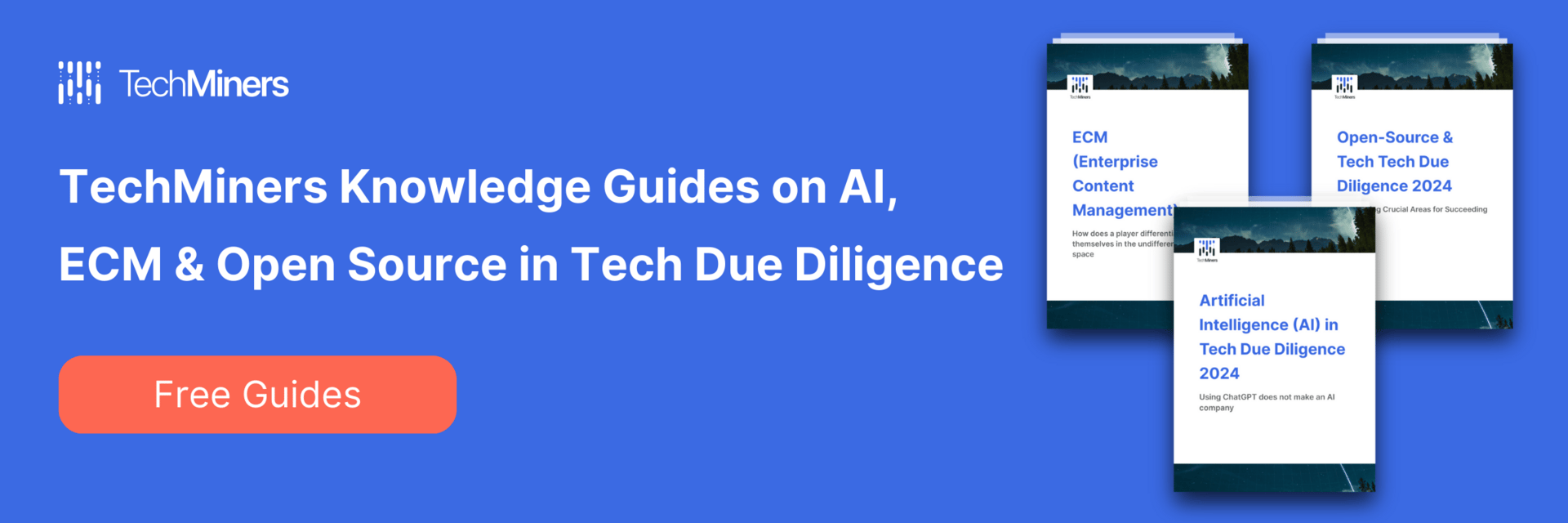
TechMiners is a data-driven Technology Due Diligence provider, offering trusted advisory services from experienced CTOs and providing in-depth insights powered by proprietary data analytics software.Looking into AI, ECM and Open Source? Get the TechMiners Tech Due Diligence Guides to these topics.
2023 will likely be remembered as The Year of AI. Even though the term was coined more than 70 years ago and even though we’ve achieved big milestones across algorithms, computing, and data since then (check out my earlier post “How to Not Miss the AI Train: Essentials You Need to Know”), it took the launch of ChatGPT in November 2022 to bring AI to the masses. Zooming out, 2023 was most likely the year of AI attention and 2024 will become the year of AI adoption.
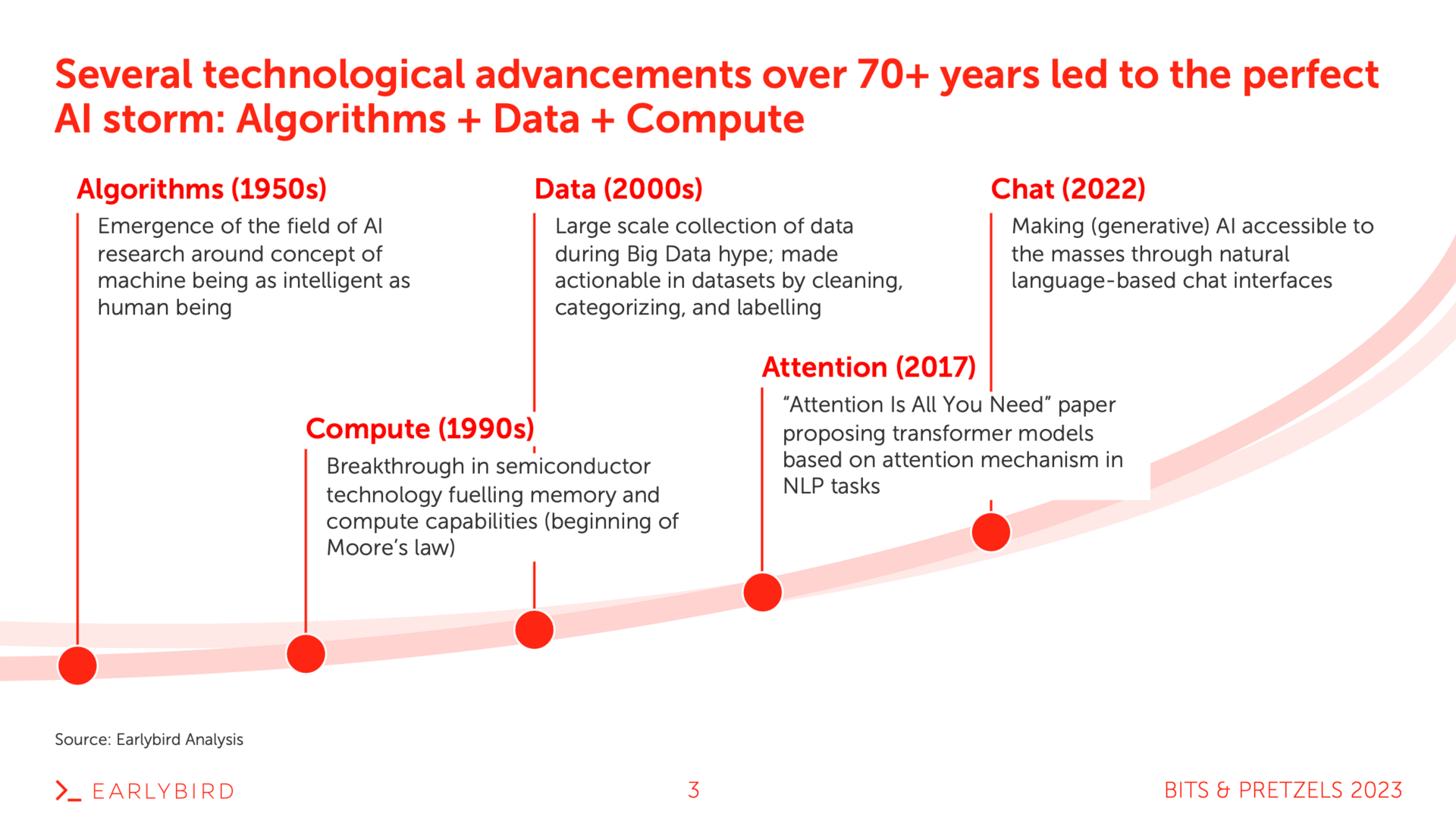
In an era where attention is all you need ;) I’m oftentimes still surprised how much noise but little signal is out there in our wonderful world of AI. Having researched, developed, and invested in AI for more than a decade myself, and being privileged to regularly learn from and interact with the best experts in this field, I decided to condense my learnings and share tangible predictions for 2024 and beyond. An attempt to provide more signal in a world full of noise.
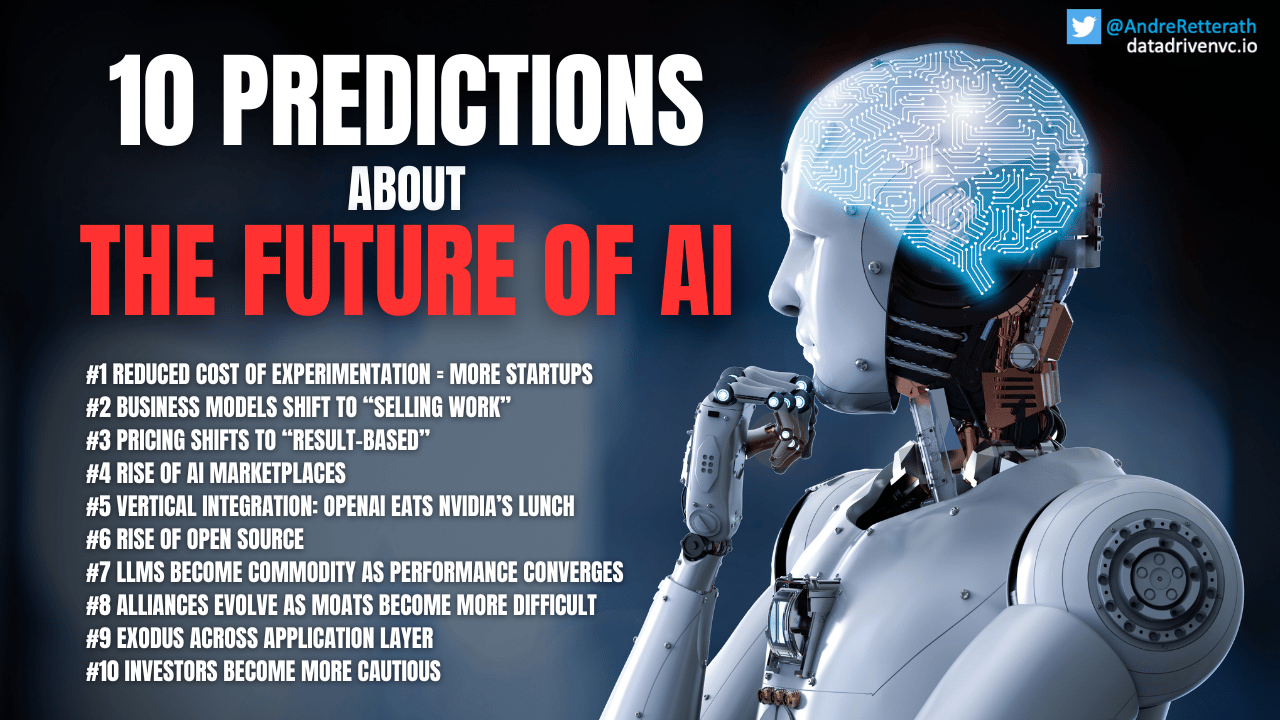
You know someone hitting these predictions? Share this post with others who might benefit.
#1 Reduced cost of experimentation
The cost of experimentation is defined as the resources required to achieve a specific milestone, e.g. product-market fit or 1M ARR. Ewens, Nanda, and Rhodes-Kropf wrote an interesting paper in 2018 about the impact of technological platform shifts on the cost of experimentation. More generally they find that technological innovation allows companies to achieve more with less. This applies to AI too.
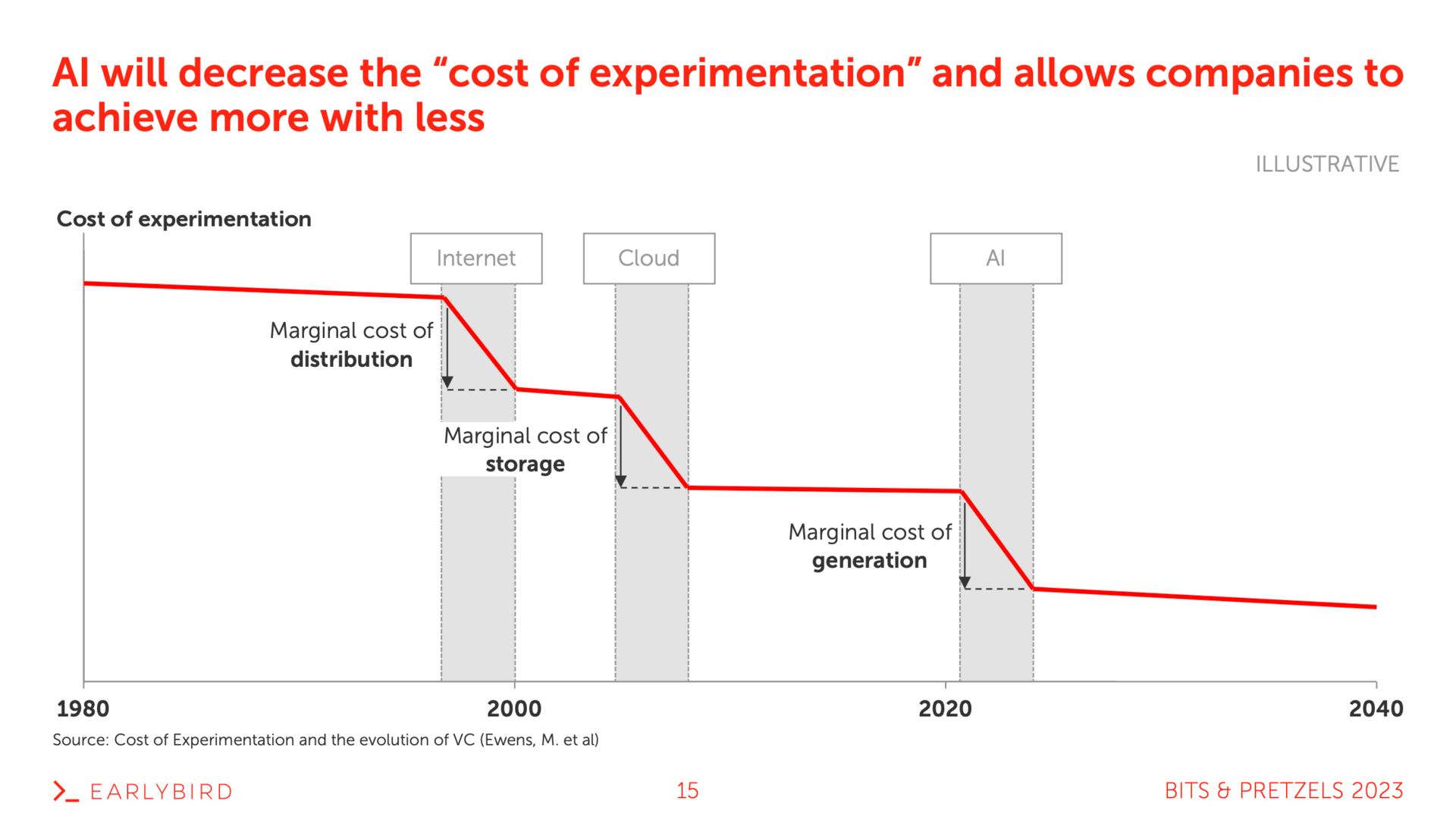
The internet reduced the marginal cost of distribution, the cloud reduced the marginal cost of storage, and AI is about to reduce the marginal cost of generation. Surely, we can add the steam engine and mobile too, but I wanted to limit the above slide to the major technologies relevant in the context of AI.
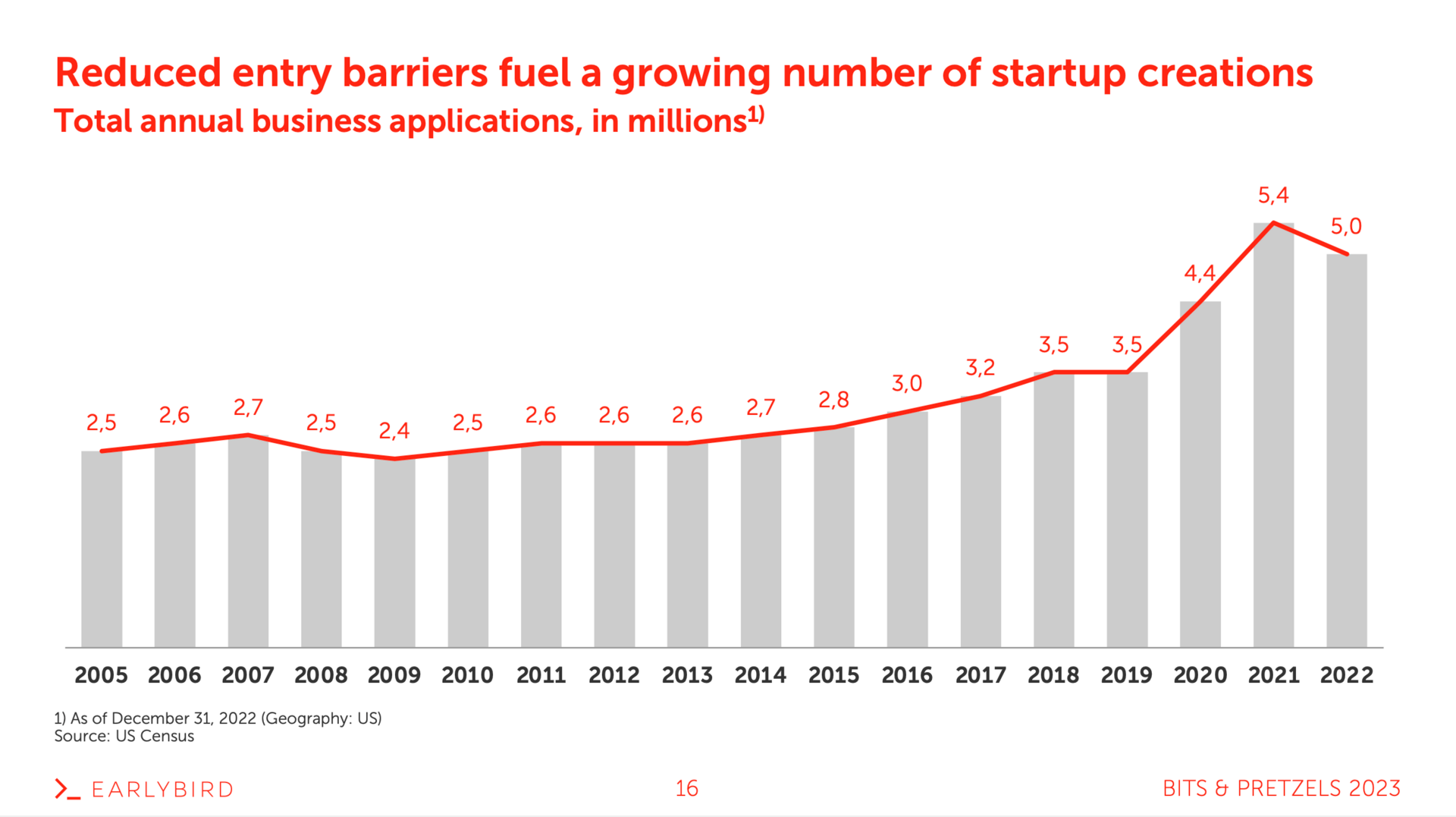
On a more macro level, reduced entry barriers historically fueled new startup creation. While the line was approximately constant over decades, we can see a few exogenous shocks that pushed the absolute level up. These step changes were likely driven by technological innovation, as highlighted in the referenced paper above. Of course, we need to account for macro factors like interest rates, yet I’m convinced that we will see more companies being founded - driven by lower entry barriers through AI. I’m excited to track the 2024 numbers!
#2 Business models shift to “selling work”
Manual Human Work: Humans started manual work with bare hands; think of the Stone Age. At some point, we invented tools like hammers and wheels to become more efficient and effective. Tools allow us to increase productivity and scale our input-output ratio. Technological innovations like the steam engine or the internet led to step increases in this ratio.
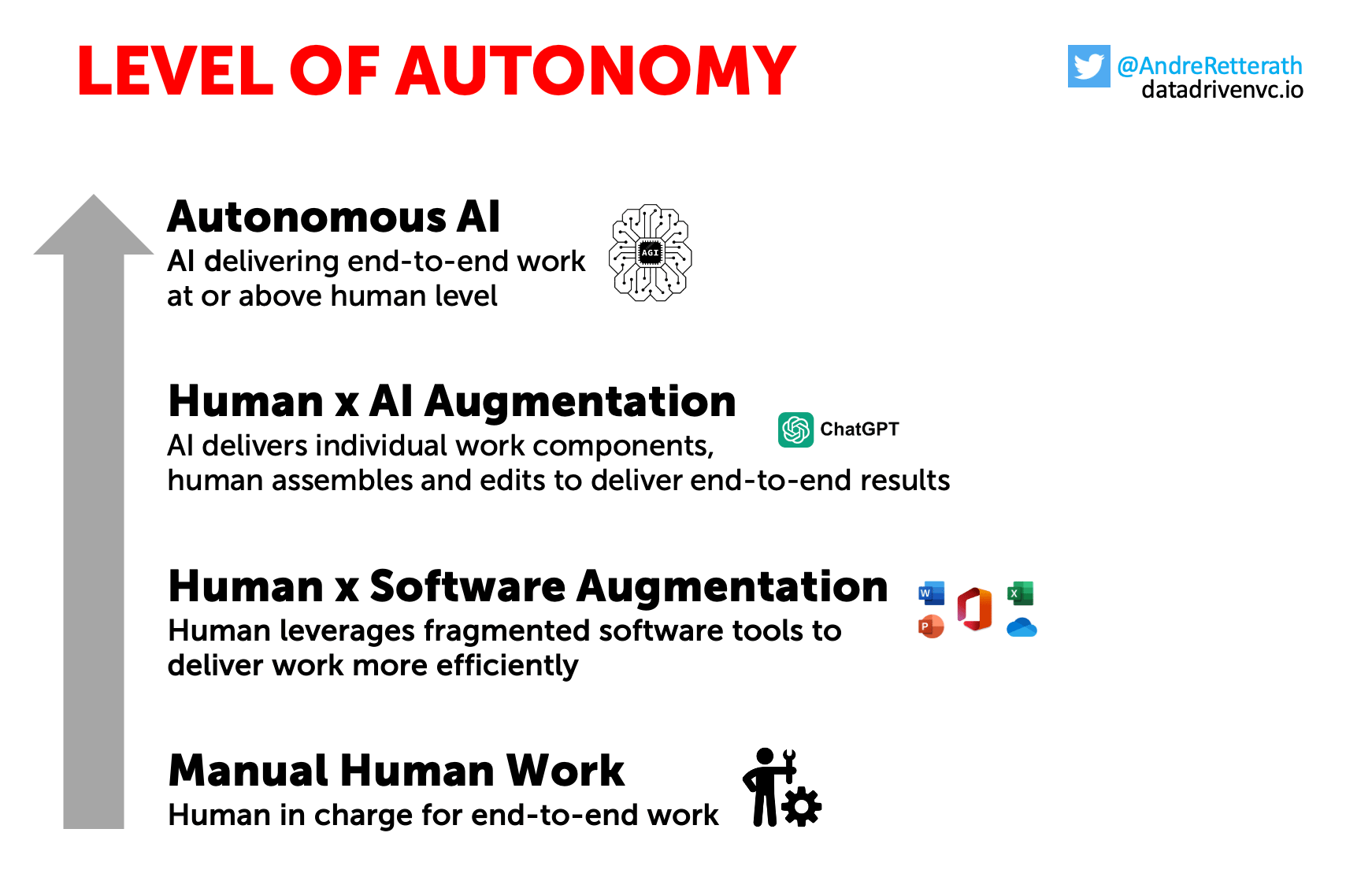
Human x Software Augmentation: Looking at modern humanity, we moved from manual work supported by physical tools to software-augmented setups in the early 1980s. Software augmented means that the human worker is still in full control of both the individual work components but also the overall end-to-end result but leverages software to get more done with less.
Throughout the past decades, software tools started to specialize and as a result, individual tool stacks became more fragmented. At some point, efficiency started to plateau as the growing number of specialized tools required increasingly more context switching, which in turn reduced productivity. A trade-off that eventually got ended by human laziness and limited willingness to adapt ever more tools.
Human x AI Augmentation: While software was historically limited to helping humans perform a task faster and/or better, AI suddenly became capable of taking instructions and delivering more comprehensive work components. Just like an untrained intern, today’s AI still requires instructions from a human expert, who in most cases assembles several AI-produced components into an end-to-end work result.
Autonomous AI: Following ChatGPT as a generic chatbot, Customized GPTs were the natural next step towards autonomous agents. Agents are AI systems that interact with each other to solve more complex tasks without human intervention, i.e. AI chains or AI ping-pong. While we saw the first experiments with AutoGPT, BabyAGI, and others in 2023 already, I expect productized solutions to be rolled out across industries and use cases soon.
Once agents become productive, we’ll face a shift from “selling software” to “selling work”. Said differently, this means that we move away from using tens of different software tools in a fragmented “human x software augmentation” stack to more of a “human as coordinator of agents”. We will perform less work ourselves and spend more time reviewing, editing, and managing agents.
As a result, companies selling AI solutions will need to shift their business models as they’re no longer selling into IT departments, but start competing with HR budgets. Soon it will be all about the “cost to get a job done”, no matter if done manually by a human, a software-augmented human, an AI-augmented human, or an autonomous agent. The only thing that matters is the cost for a specific quality and timeline.
#3 Pricing shifts to result-based
In line with the business model shift above, I expect pricing models to adapt too. While we historically moved from fixed licenses to more flexible SaaS and from SaaS to usage-based models, I believe that AI solutions should be less input-driven (yes, companies should be able to pay their compute bills..) but more output-driven. Hereof, I expect that we’ll soon move from usage-based to result-based pricing.
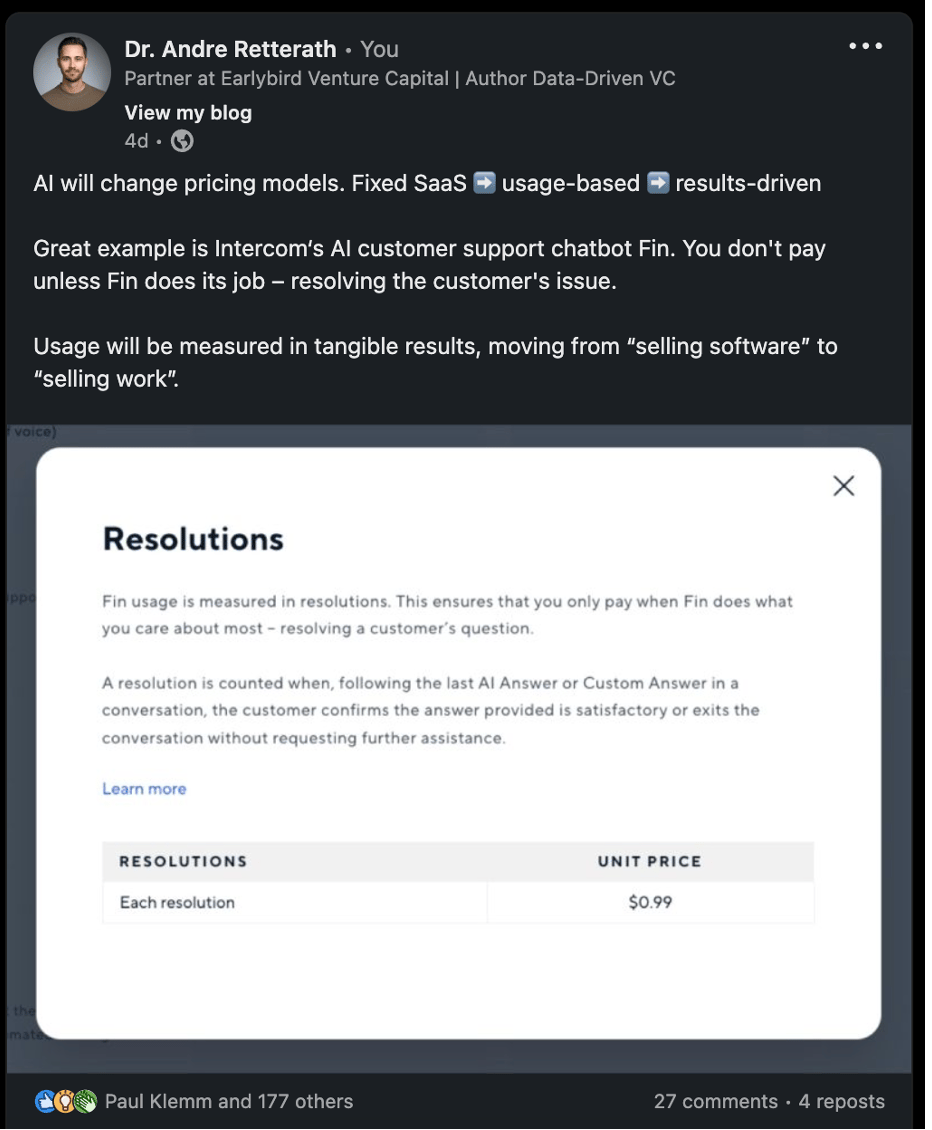
Subscribe to DDVC to read the rest.
Join the Data Driven VC community to get access to this post and other subscriber-only content.
Join the Community
